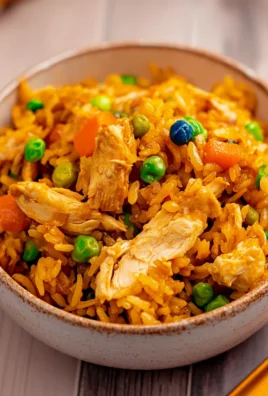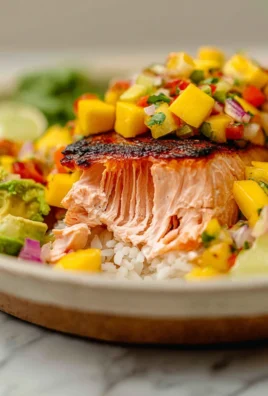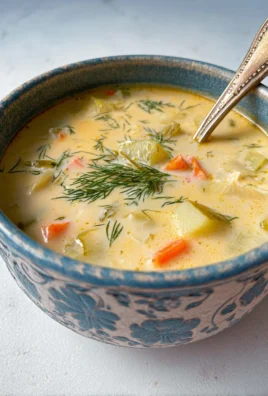There’s nothing more comforting than a bowl of rich, hearty beef ragu pasta. This classic Italian dish is known for its deep, slow-cooked flavors and robust texture. Traditionally, ragu is a slow-simmered sauce made with meat, tomatoes, and aromatic vegetables, often served over pasta. However, making an authentic ragu can take hours, which isn’t always practical for busy weeknights. That’s where this one pot beef ragu pasta comes in—it delivers the same bold flavors in a fraction of the time, all cooked in a single pot for easy cleanup.

This one pot version simplifies the process by cooking everything—from browning the beef to simmering the sauce and even boiling the pasta—right in the same pot. This not only enhances the flavors as the pasta absorbs the rich sauce but also saves you from washing multiple dishes. Plus, it’s a fantastic make-ahead meal, as ragu often tastes even better the next day!
In this guide, we’ll explore everything you need to know to make the perfect one pot beef ragu pasta, including its history, key ingredients, step-by-step instructions, and expert tips to ensure success.
History and Cultural Significance of Ragu
Origins of Ragu in Italy
Ragu is one of Italy’s most beloved sauces, originating in the Emilia-Romagna region. While there are many variations, the most famous is Ragù alla Bolognese, which is traditionally served with tagliatelle pasta. Unlike the more tomato-heavy American-style meat sauce, authentic ragu relies on slow cooking and a balance of meat, aromatics, and wine for its depth of flavor.
Historians trace the dish back to Napoleon’s occupation of Italy, where French-style meat stews influenced Italian cooking. Over time, different regions developed their own unique versions:
- Neapolitan Ragu – A slow-simmered tomato-based sauce often cooked with large cuts of meat.
- Tuscan Ragu – Often made with wild boar or beef, featuring a rustic, earthy flavor.
- Bolognese Ragu – The most famous, featuring finely ground meat, milk, and a touch of tomato.
This one pot version modernizes ragu while maintaining its traditional richness. By using high-quality ingredients and proper techniques, you can recreate the flavors of an authentic Italian kitchen in less time.
Preparation Phase & Essential Tools
Time & Yield
- Prep Time: 10 minutes
- Cook Time: 50 minutes
- Total Time: 60 minutes
- Servings: 4-6
Essential Tools & Equipment
To achieve the best results, you’ll need:
- Heavy-bottomed pot or Dutch oven – Distributes heat evenly for slow simmering.
- Sharp knife & cutting board – For prepping the aromatics.
- Wooden spoon – Helps stir without scratching your pot.
- Measuring cups & spoons – Ensures accurate seasoning and liquid measurements.
Ingredients List
Main Ingredients
- 1 lb ground beef or chuck roast (shredded) – Adds depth and richness to the sauce.
- 1 medium onion, diced – Provides a sweet, aromatic base.
- 3 cloves garlic, minced – Essential for a bold, savory flavor.
- 1 can (28 oz) crushed tomatoes – Forms the base of the sauce.
- 2 tbsp tomato paste – Concentrated tomato flavor for depth.
- 1 cup beef broth – Enhances the meaty flavor and keeps the sauce rich.
- ½ cup red wine (optional) – Adds depth and complexity.
Seasonings & Herbs
- 1 tsp salt – Balances flavors.
- ½ tsp black pepper – Adds a touch of spice.
- 1 tsp dried oregano – Brings out the Italian flavors.
- 1 tsp dried basil – Complements the tomatoes.
- 1 tsp crushed red pepper flakes (optional) – Adds heat.
- 1 bay leaf – Infuses subtle earthiness.
Pasta & Cheese
- 12 oz pasta (rigatoni, penne, or pappardelle) – Holds the thick sauce well.
- ½ cup grated Parmesan cheese – Adds umami and creaminess.
- Fresh parsley or basil for garnish – Enhances flavor and presentation.
Step-by-Step Cooking Instructions
Step 1: Sauté the Aromatics
- Heat a large pot or Dutch oven over medium heat.
- Add a drizzle of olive oil, then toss in the diced onion. Sauté for about 3-4 minutes, stirring occasionally, until softened.
- Add the minced garlic and cook for another 30 seconds, stirring constantly.
Step 2: Brown the Beef
- Increase the heat to medium-high and add the ground beef or shredded chuck roast.
- Cook, breaking it apart with a wooden spoon, until browned and cooked through. This should take about 5-7 minutes.
- Drain excess fat if needed, but leave a little for flavor.
Step 3: Deglaze with Red Wine
- Pour in the red wine and stir well, scraping up any browned bits from the bottom of the pot.
- Let it simmer for about 2-3 minutes, allowing the alcohol to cook off.
Step 4: Add Tomatoes, Broth, and Herbs
- Stir in the crushed tomatoes, tomato paste, beef broth, and all seasonings.
- Mix well to combine and bring to a gentle simmer.
- Reduce heat to low, cover partially, and let it cook for 25-30 minutes, stirring occasionally.
Step 5: Stir in the Pasta & Simmer
- Add the pasta directly into the simmering sauce, stirring well to coat.
- Cover and cook for 10-12 minutes, or until the pasta is al dente. Stir occasionally to prevent sticking.
- If needed, add a bit more broth or water if the sauce becomes too thick.
Step 6: Finish with Cheese & Garnish
- Remove the bay leaf and discard.
- Stir in the grated Parmesan cheese, mixing until melted and creamy.
- Garnish with fresh parsley or basil and serve immediately.
Tips for Perfect One Pot Beef Ragu Pasta
- Use a mix of meats – Combining beef with pork or veal enhances the flavor.
- Simmer longer if possible – The longer the sauce cooks, the deeper the flavor.
- Use high-quality tomatoes – San Marzano tomatoes yield the best taste.
- Adjust consistency as needed – If too thick, add a splash of broth.
- Make it creamy – A touch of heavy cream creates a velvety finish.
Perfect Side Dishes for Beef Ragu Pasta
Pairing your one pot beef ragu pasta with the right side dish enhances the meal, balancing its rich, meaty flavors with freshness, crunch, or creaminess. Here are some of the best side dishes to serve alongside this hearty dish.
1. Classic Garlic Bread
A crispy, buttery slice of garlic bread is the perfect accompaniment to ragu pasta. The crunchy texture contrasts with the soft pasta, while the garlicky, buttery goodness complements the deep flavors of the sauce. For an extra touch, add a sprinkle of Parmesan and bake until golden brown.
2. Caesar Salad
The crisp, refreshing bite of romaine lettuce, tossed with creamy Caesar dressing, Parmesan cheese, and crunchy croutons, provides a bright contrast to the richness of the beef ragu. The tangy dressing cuts through the hearty flavors, making it an ideal pairing.
3. Sautéed Spinach and Mushrooms
Lightly sautéed spinach with garlic and mushrooms brings an earthy depth that complements the ragu. This simple yet flavorful side dish adds a dose of nutrients while keeping the meal balanced.
4. Roasted Brussels Sprouts with Parmesan
Crispy, caramelized Brussels sprouts tossed with a bit of olive oil and Parmesan cheese offer a slightly bitter, nutty contrast to the pasta’s richness. Roasting brings out their natural sweetness, making them a delicious and healthy side option.
5. Caprese Salad
Fresh tomatoes, basil, and mozzarella drizzled with balsamic glaze bring a vibrant, refreshing contrast to the hearty beef ragu. The lightness of the salad balances the depth of the pasta dish, making it a great starter or side.
6. Cheesy Polenta
A creamy, cheesy polenta is a fantastic alternative to pasta. The soft, velvety texture pairs beautifully with the rich ragu sauce, creating a dish that feels indulgent yet comforting.
7. Balsamic Roasted Vegetables
A mix of zucchini, bell peppers, cherry tomatoes, and carrots roasted with balsamic vinegar adds a sweet and tangy dimension to your meal. The roasting process intensifies the flavors of the vegetables, making them a great addition to the plate.
8. Italian Bruschetta
Toasted baguette slices topped with a mixture of diced tomatoes, garlic, basil, and olive oil make for a light yet flavorful side. The acidity from the tomatoes cuts through the richness of the ragu, adding brightness to every bite.
Nutritional Information & Health Benefits
Calories and Macronutrients
Beef ragu pasta is a well-balanced meal, providing a good mix of protein, healthy fats, and carbohydrates. While it’s rich in flavor, there are simple ways to adjust the recipe to suit various dietary needs.
- Protein – The beef in the ragu provides a high-quality protein source, essential for muscle repair and overall health.
- Carbohydrates – Pasta is a good source of energy, making this meal ideal for active lifestyles. Choosing whole wheat or legume-based pasta can add fiber and nutrients.
- Fats – The olive oil and beef contribute healthy fats, but for a lighter version, lean ground beef or turkey can be used.
Health Benefits of Key Ingredients
- Tomatoes – Packed with lycopene, a powerful antioxidant that supports heart health and reduces inflammation.
- Garlic – Known for its immune-boosting and anti-inflammatory properties.
- Olive Oil – Provides heart-healthy monounsaturated fats.
- Parmesan Cheese – Adds a boost of calcium and umami flavor.
Ways to Make it Healthier
- Use whole wheat pasta for extra fiber.
- Reduce the cheese to lower the fat content.
- Add more vegetables to increase nutrients and fiber.
- Swap ground beef for turkey to cut down on saturated fat.
Common Mistakes & How to Perfect the Recipe
Mistake 1: Overcooking the Beef
Browning the beef properly is crucial. Cooking it on too high of a heat or for too long can lead to dry, tough meat. Instead, cook it over medium heat until just browned, then let it simmer gently to keep it tender.
Mistake 2: Not Deglazing the Pot
When browning the meat, flavorful bits stick to the bottom of the pan. Deglazing with red wine or broth lifts these flavors into the sauce, adding depth and complexity.
Mistake 3: Adding Too Much Liquid
While ragu is meant to be thick and hearty, adding too much broth or water can make the sauce too thin. Start with a small amount and add more only if necessary.
Mistake 4: Cooking Pasta Separately
For a true one-pot meal, cook the pasta directly in the sauce. This allows it to absorb all the rich flavors, making every bite even more delicious.
Mistake 5: Skipping the Resting Time
Letting the ragu sit for a few minutes before serving allows the flavors to meld together. This small step enhances the depth of flavor, making the dish even more satisfying.
Tips, Notes, and Variations
Pro Tips for the Best Ragu
- Use high-quality tomatoes – San Marzano or Italian-imported tomatoes provide the best depth of flavor. If using canned tomatoes, crush them by hand for a chunkier texture.
- Simmer longer for richer flavor – While this recipe is designed to be quick, letting it simmer for an extra 20–30 minutes deepens the taste.
- Don’t rush the browning process – Take your time browning the meat properly, as it develops the most flavor in the early stages of cooking.
- Save pasta water – A splash of reserved starchy pasta water helps emulsify the sauce, making it cling to the pasta beautifully.
- Grate your own Parmesan – Pre-grated cheese contains anti-caking agents that can affect the sauce’s texture. Freshly grated cheese melts better and tastes superior.
Ingredient Variations
- Meat Alternatives – Substitute ground beef with ground pork, veal, turkey, or even a mix for a more complex flavor.
- Vegetable-Loaded Ragu – Add finely chopped carrots, celery, zucchini, or mushrooms for extra nutrients.
- Dairy-Free Version – Skip the Parmesan and finish with a drizzle of olive oil or nutritional yeast for a plant-based umami boost.
- Creamy Ragu – Stir in a splash of heavy cream at the end for a velvety texture.
- Spicy Ragu – Increase the red pepper flakes or add a touch of Calabrian chili paste.
- Gluten-Free – Use gluten-free pasta or serve over polenta for an alternative base.
Storing & Reheating
Refrigeration
Store leftovers in an airtight container for up to 4 days. The flavors deepen over time, making it even better the next day.
Freezing Instructions
For long-term storage, freeze the ragu sauce separately from the pasta:
- Allow the sauce to cool completely before transferring it to an airtight container.
- Freeze for up to 3 months.
- To reheat, thaw overnight in the fridge and warm gently on the stovetop.
If freezing the entire dish, slightly undercook the pasta to prevent it from becoming mushy when reheated.
Reheating Methods
- Stovetop: Add a splash of beef broth or water and reheat over medium heat, stirring occasionally until warmed through.
- Microwave: Place a portion in a microwave-safe dish, cover with a damp paper towel, and heat in 30-second intervals, stirring between each.
- Oven: If reheating a large portion, cover with foil and bake at 350°F for 15–20 minutes.
Frequently Asked Questions (FAQs)
1. Can I make this in a slow cooker?
Yes! Brown the meat and aromatics in a pan first, then transfer everything to a slow cooker. Cook on low for 6–8 hours or high for 3–4 hours, adding the pasta during the last 20–30 minutes.
2. What’s the best pasta shape for beef ragu?
Thicker pasta shapes like pappardelle, rigatoni, tagliatelle, or fettuccine work best as they hold onto the sauce well. If using short pasta like penne, make sure to stir frequently to prevent sticking.
3. Can I make this recipe ahead of time?
Absolutely! Ragu tastes even better the next day as the flavors meld together. Store in the fridge and reheat when ready to serve.
4. What’s the best substitute for red wine?
If avoiding alcohol, swap the red wine for extra beef broth, balsamic vinegar, or pomegranate juice to maintain depth of flavor.
5. How can I make the sauce thicker?
If the sauce is too thin, continue simmering uncovered until it reduces. Alternatively, mix a teaspoon of cornstarch with a tablespoon of water and stir it in.
6. Can I add vegetables to this dish?
Yes! Finely chopped carrots, celery, bell peppers, or mushrooms add extra nutrients and flavor without overpowering the dish.
7. What cheese pairs well with beef ragu?
Aside from Parmesan, you can use Pecorino Romano, Asiago, or Grana Padano for different levels of saltiness and sharpness.
8. How do I keep my pasta from overcooking?
Add the pasta toward the end of cooking and check frequently to prevent it from getting too soft. If needed, undercook the pasta slightly to account for residual heat.
9. Can I make this dish spicy?
Yes! Add extra red pepper flakes, cayenne pepper, or a dollop of chili paste for a spicier kick.
10. How can I make this more kid-friendly?
Reduce or omit the red pepper flakes and use a milder cheese like mozzarella for a softer, creamier finish.
Conclusion
This one pot beef ragu pasta is the ultimate comfort food, combining bold flavors, a rich sauce, and an easy cleanup process. Whether you’re making it for a weeknight dinner, meal prep, or a special occasion, it’s a recipe that never fails to impress.
With simple variations, storage tips, and expert techniques, you can tailor this dish to suit any dietary need or preference. The best part? It only gets better over time, making leftovers just as enjoyable as the first serving.
Try it out, experiment with different flavors, and most importantly—enjoy every bite!

One Pot Beef Ragu Pasta
- Total Time: 60 minutes
- Yield: 4–6 servings 1x
Description
This one pot beef ragu pasta is a rich, savory dish packed with deep, slow-cooked flavors in just one hour! Made with ground beef, aromatic herbs, and a luscious tomato-based sauce, this recipe is perfect for a cozy dinner with minimal cleanup.
Ingredients
Main Ingredients
- 1 lb ground beef (or shredded chuck roast)
- 1 medium onion, diced
- 3 cloves garlic, minced
- 1 can (28 oz) crushed tomatoes
- 2 tbsp tomato paste
- 1 cup beef broth
- ½ cup red wine (optional)
Seasonings & Herbs
- 1 tsp salt
- ½ tsp black pepper
- 1 tsp dried oregano
- 1 tsp dried basil
- 1 tsp crushed red pepper flakes (optional)
- 1 bay leaf
Pasta & Cheese
- 12 oz pasta (rigatoni, penne, or pappardelle)
- ½ cup grated Parmesan cheese
- Fresh parsley or basil for garnish
Instructions
- Sauté Aromatics – Heat olive oil in a large pot over medium heat. Add onions and cook until soft. Stir in garlic and cook for another 30 seconds.
- Brown the Beef – Increase heat to medium-high and add ground beef. Cook until browned, breaking it up with a wooden spoon. Drain excess fat if necessary.
- Deglaze with Wine – Pour in red wine (if using) and scrape up the browned bits. Let it simmer for 2 minutes.
- Add Tomatoes & Seasonings – Stir in crushed tomatoes, tomato paste, beef broth, and seasonings. Bring to a gentle simmer.
- Cook the Pasta in the Sauce – Add uncooked pasta directly into the pot. Stir well and cover. Let cook for 10–12 minutes, stirring occasionally.
- Finish with Cheese – Remove from heat, stir in Parmesan cheese, and garnish with fresh herbs. Serve warm.
Notes
- For a deeper flavor, let the sauce simmer for an extra 20 minutes before adding pasta.
- Use whole wheat pasta for a healthier alternative.
- Store leftovers in an airtight container for up to 4 days or freeze the sauce for up to 3 months.
- Prep Time: 10 minutes
- Cook Time: 50 minutes
- Category: Main Dish
- Method: Stovetop
- Cuisine: Italian
Nutrition
- Calories: 450
- Sugar: 7g
- Sodium: 620mg
- Fat: 12g
- Saturated Fat: 5g
- Unsaturated Fat: 6g
- Carbohydrates: 52g
- Fiber: 5g
- Protein: 28g
- Cholesterol: 65mg




Leave a Comment